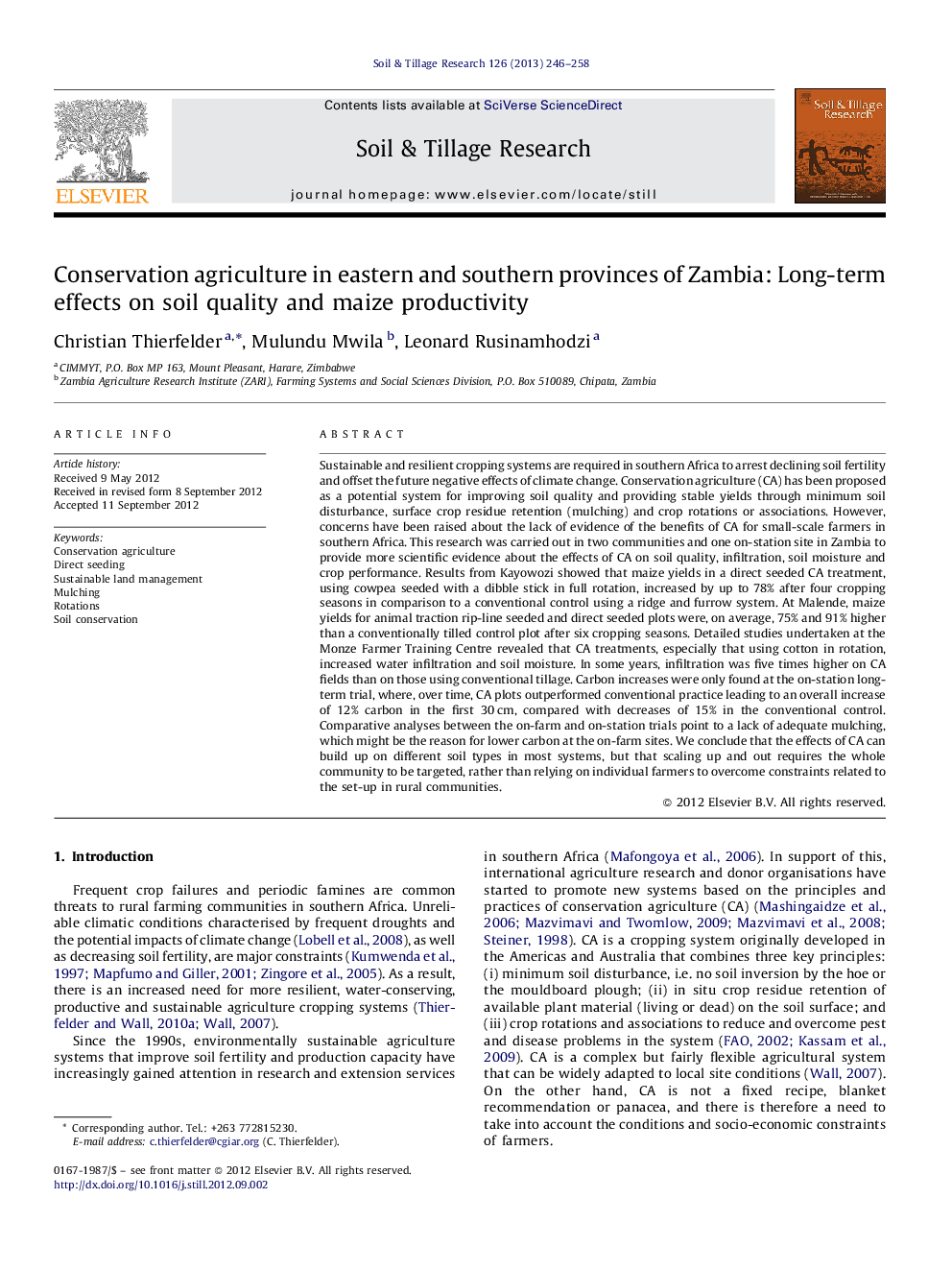| کد مقاله | کد نشریه | سال انتشار | مقاله انگلیسی | نسخه تمام متن |
|---|---|---|---|---|
| 305986 | 513064 | 2013 | 13 صفحه PDF | دانلود رایگان |

Sustainable and resilient cropping systems are required in southern Africa to arrest declining soil fertility and offset the future negative effects of climate change. Conservation agriculture (CA) has been proposed as a potential system for improving soil quality and providing stable yields through minimum soil disturbance, surface crop residue retention (mulching) and crop rotations or associations. However, concerns have been raised about the lack of evidence of the benefits of CA for small-scale farmers in southern Africa. This research was carried out in two communities and one on-station site in Zambia to provide more scientific evidence about the effects of CA on soil quality, infiltration, soil moisture and crop performance. Results from Kayowozi showed that maize yields in a direct seeded CA treatment, using cowpea seeded with a dibble stick in full rotation, increased by up to 78% after four cropping seasons in comparison to a conventional control using a ridge and furrow system. At Malende, maize yields for animal traction rip-line seeded and direct seeded plots were, on average, 75% and 91% higher than a conventionally tilled control plot after six cropping seasons. Detailed studies undertaken at the Monze Farmer Training Centre revealed that CA treatments, especially that using cotton in rotation, increased water infiltration and soil moisture. In some years, infiltration was five times higher on CA fields than on those using conventional tillage. Carbon increases were only found at the on-station long-term trial, where, over time, CA plots outperformed conventional practice leading to an overall increase of 12% carbon in the first 30 cm, compared with decreases of 15% in the conventional control. Comparative analyses between the on-farm and on-station trials point to a lack of adequate mulching, which might be the reason for lower carbon at the on-farm sites. We conclude that the effects of CA can build up on different soil types in most systems, but that scaling up and out requires the whole community to be targeted, rather than relying on individual farmers to overcome constraints related to the set-up in rural communities.
► The paper summarizes results from a longer-term study on CA systems in Zambia.
► It focuses on the benefits and constraints of this cropping systems in southern Africa.
► Results showed higher infiltration and water content on CA fields on-farm and on-station.
► Maize productivity increased on CA systems at all sites after three to five cropping season.
► Challenges on residue retention exist which need to be addressed through site specific research.
Journal: Soil and Tillage Research - Volume 126, January 2013, Pages 246–258